Pool Boiling of Water around Horizontal Tube, CFD Simulation, ANSYS Fluent
$160.00 Student Discount
- The problem numerically simulates a Pool Boiling unsteadily using ANSYS Fluent software.
- We design the model in Spaceclaim and then meshed it with ANSYS Meshing software generating 92,151 cells.
- The multi-phase Eulerian method is used for simulating the liquid phase of water and the vapor phase of bubbles
- The k-ɛ realizable model is performed to simulate turbulent behavior of the bubble.
To Order Your Project or benefit from a CFD consultation, contact our experts via email ([email protected]), online support tab, or WhatsApp at +44 7443 197273.
There are some Free Products to check our service quality.
If you want the training video in another language instead of English, ask it via [email protected] after you buy the product.
Description
Pool Boiling of Water around Horizontal Tube to find Heat Transfer Characteristics
Description
The pool boiling phenomenon is one of the most important processes taking place in different small and large-scale industries, from petrochemical plants to gas refineries and pharmaceutical industries. In this project, pool boiling, where a cylindrical heater is located in a rectangular pool filled with water, the heater causes the water to boil and only those molecules of water that are close to the heater’s surface start boiling and are transferred to the vapor phase.
In this project, SpaceClaim has been utilized to create the geometry. Also, ANSYS Meshing has been utilized to generate a fine mesh grid. So, 92,151 cells have been generated.
Methodology
As there are several projects dealing with pool boiling in a steady or pseudo-steady state. the main purpose of the project is to focus on pool boiling in a transient solution and capture and track the vapor bubbles. The multi-phase Eulerian method has been adopted to cope with the liquid phase of water and the vapor phase of bubbles. All the drag, lift, wall lubrication, turbulent dispersion, turbulent interaction, virtual mass, and surface tension forces have been considered based on the correlations mentioned in the literature.
Furthermore, k-ɛ realizable equations have been performed to deal with the turbulent behavior of the bubble formation around the cylindrical heater. as thermal insulation walls. Still, the cylindrical heater surface has been maintained at 107 ˚C to boil the water, which is at 100 ˚C initially. Also, an adaptive time step with a minimum time of 10-5 s and an initial time step of 10-4 s has been adopted for this simulation.
Conclusion
The results confirmed that this simulation could capture the bubble formation and bubble rising as exactly as experimental works. As expected, the contours of velocity and volume fraction of vapor show that the bubbles have been formed in a thin layer around the cylinder and started moving up and rising to the pool surface.
Furthermore, the heat flux and heat transfer coefficient contours show that a large flux has been generated in the heater wall, and a large amount of heat is escaping from the heater to the water surrounding it. Finally, the heat transfer coefficient and heater wall heat flux reached 1322 W/m2K and 9055 W/m2 in this simulation.
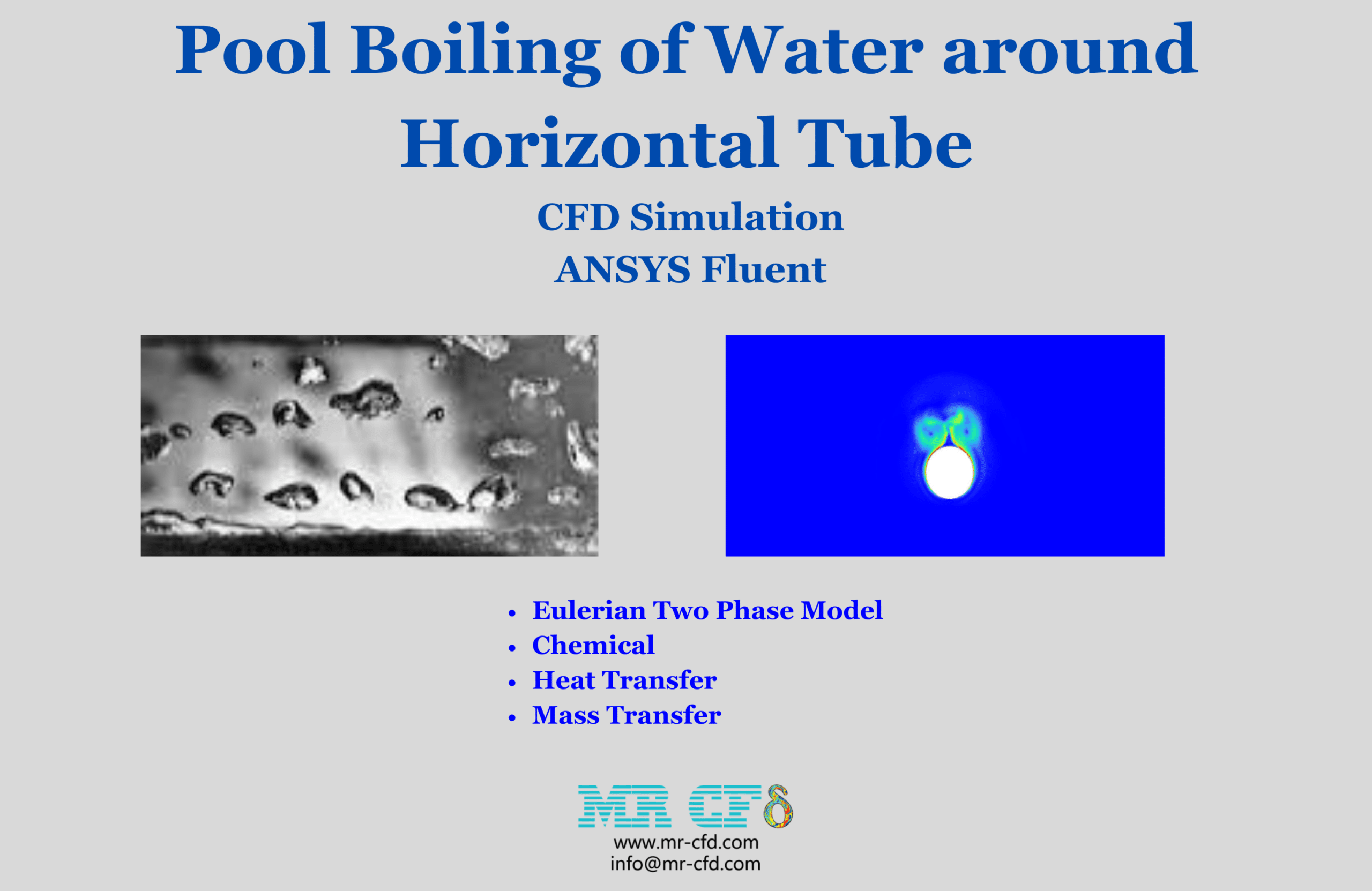
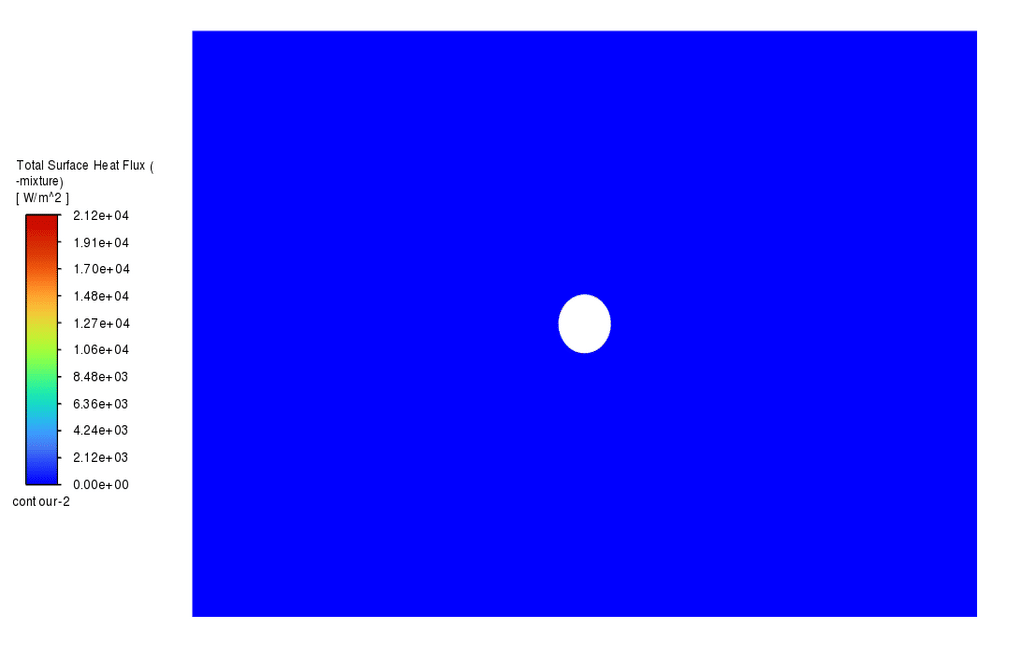
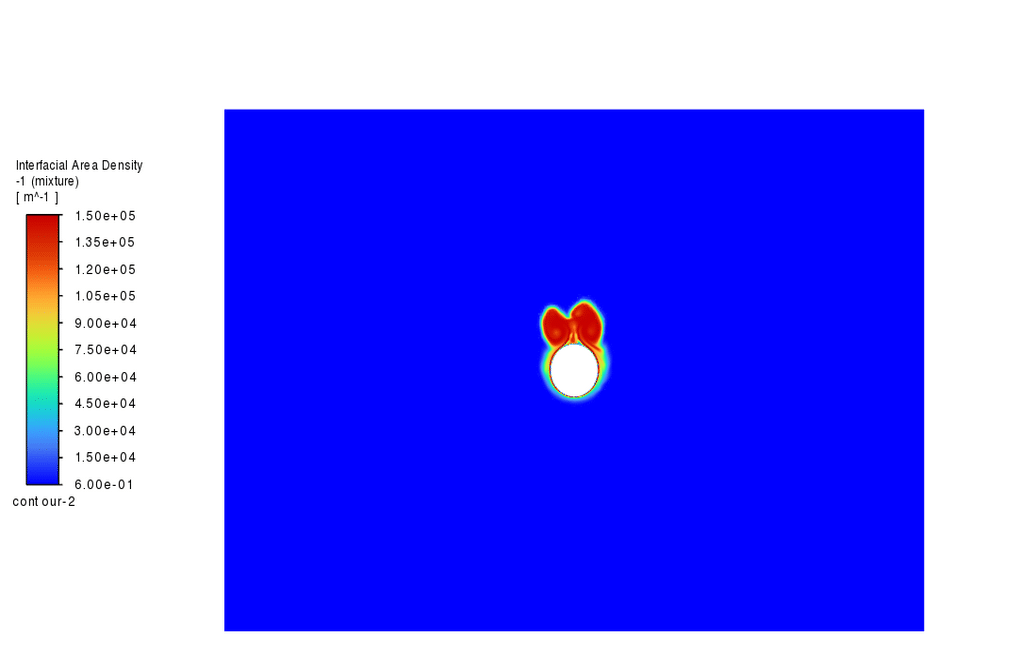

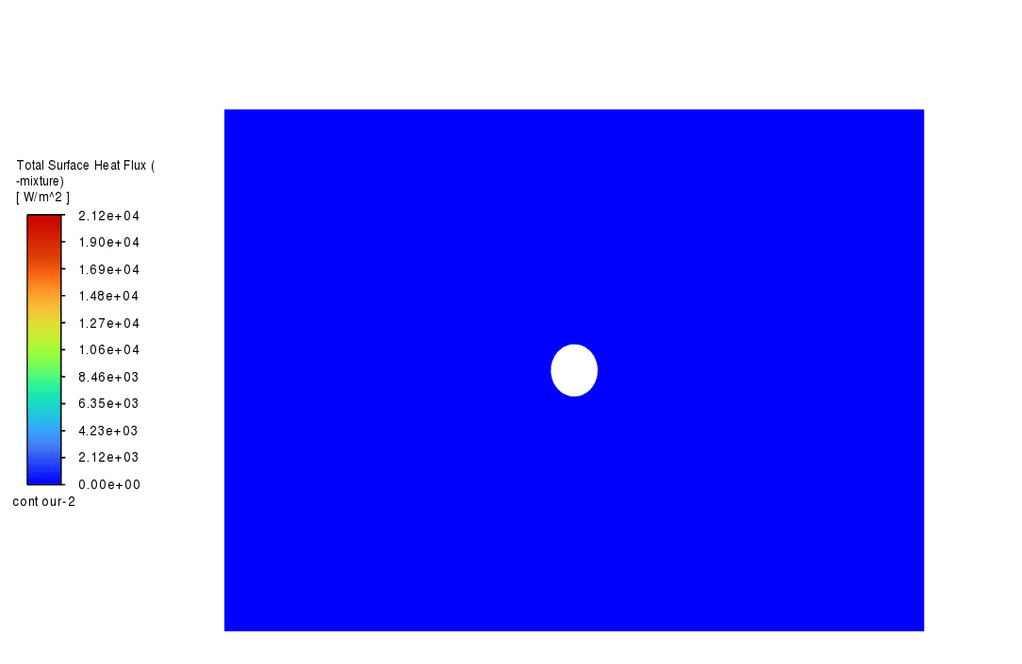

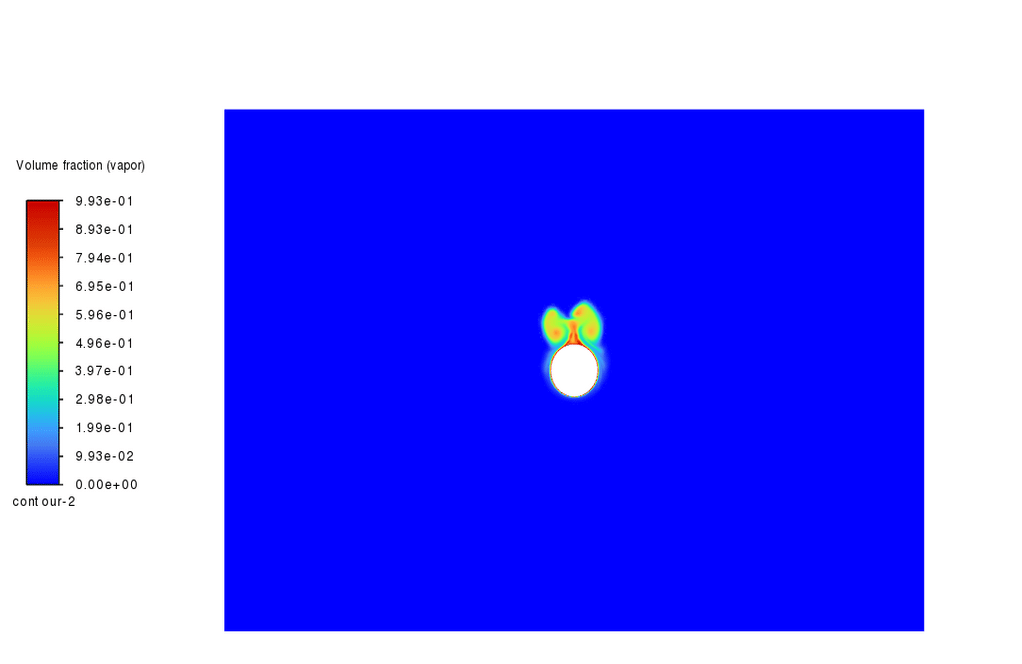

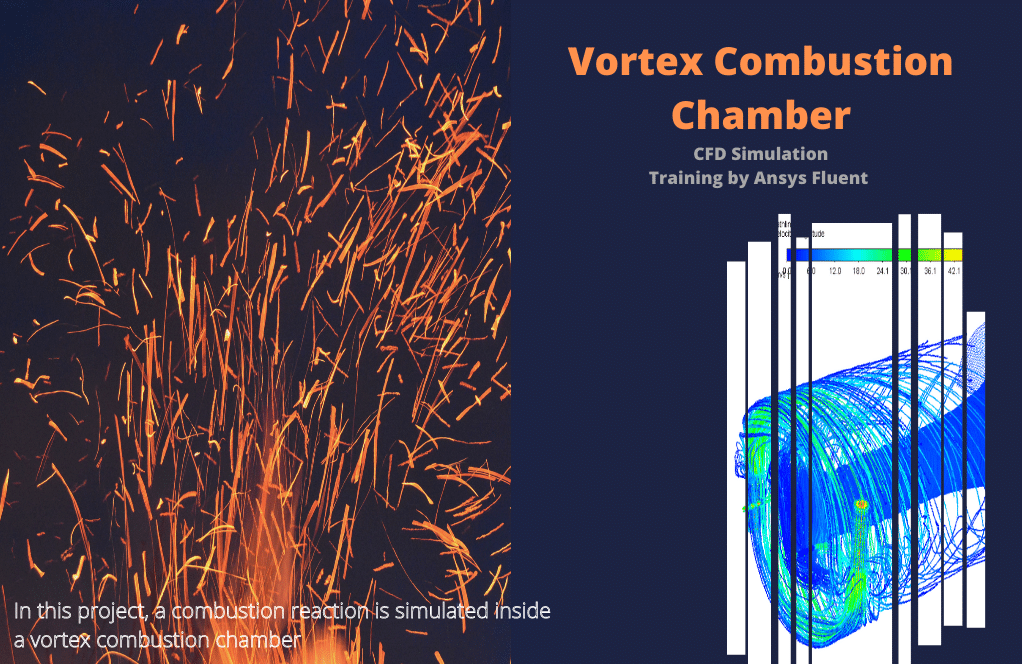

Dr. Araceli Beahan –
I’m extremely pleased with the accuracy of the bubble formation and movement in this simulation. It’s impressive to see the simulation mimicking real-world phenomena so closely!
MR CFD Support –
We’re thrilled to hear that you’re satisfied with the level of accuracy displayed in the pool boiling simulation. Capturing the intricacies of bubble dynamics is essential for understanding heat transfer characteristics, and your recognition of these results is much appreciated. Thank you for your positive feedback!
Edward Koss –
The simulation captures the bubble formation very well! Were the heat transfer coefficients in different regions of the pool calculated and compared during simulation monitoring, or only after the simulation concluded?
MR CFD Support –
Thank you for your compliments! The heat transfer coefficients were continuously monitored throughout the simulation process to ensure accurate capture of the dynamics involved in pool boiling. This allowed for an assessment of changes in heat transfer over time and ensured that the most robust data was collected.
Dr. Percival Gulgowski –
The level of detail in this simulation seems phenomenal. Really helps envision how bubbles form and behave in boiling water.
MR CFD Support –
We are delighted to hear that our simulation has provided you with a clear understanding of pool boiling dynamics. Visualizing the bubble formation and heat transfer characteristics is fundamental for practical applications. Thank you for your positive feedback!
Larry Abbott PhD –
I was really impressed by the level of detail in the simulation of water pool boiling around a horizontal tube. MR CFD’s product handled the visualization of bubble formation and rise phenomenally well. The use of multi-phase Eulerian method for capturing the intricate interactions between the liquid and vapor phases was insightful. I’m also amazed by your ability to track transient heat transfer characteristics with precision. Great job on implementing adaptive time-stepping for the simulation!
MR CFD Support –
Thank you for your positive feedback! We are thrilled to hear that our efforts to accurately simulate the pool boiling phenomenon have exceeded your expectations. We take pride in our attention to detail and the implementation of adaptive time-stepping to achieve precise and reliable results. Your satisfaction with the visualization and tracking of bubble formation validates our commitment to high-quality CFD simulations. We appreciate your recognition of our product and we’re here to support any further inquiries you might have.
Darrel Satterfield –
I’m fascinated by the attention to detail in this simulation! Could you inform me about how heat transfer coefficients were calculated during this CFD simulation?
MR CFD Support –
Certainly! In the CFD simulation involving pool boiling, the heat transfer coefficients were calculated based on the local temperatures, heat flux at the cylindrical heater’s surface, and the boiling water properties. The CFD software likely employs specific functions and equations, such as Newton’s law of cooling, which is often used to determine heat transfer coefficients: h = q / (T_surface – T_fluid), where ‘h’ is the heat transfer coefficient, ‘q’ is the heat flux, and T_surface and T_fluid are the temperatures at the surface and in the fluid, respectively. This calculation is integrated into the software algorithms and executed numerically at each time step, considering the dynamic changes in the boiling process.
Kiara Welch –
The description of the simulation is insightful. It’s impressive how the dynamic process of bubble formation and rising is captured. The heat transfer coefficient and wall flux outcomes particularly piqued my curiosity. It reflects well-executed modelling when simulations align closely with experimental evidence. Excellent work!
MR CFD Support –
Thank you for your kind review! We are delighted to know that our Pool Boiling simulation has met your expectations and that you’re satisfied with the detailed outcome of the bubble formation and heat transfer characteristics. Capturing these complex phenomena in a transient state is challenging, and we’re glad that the results reflect the accuracy of our simulation process. If you need any more information or support, please don’t hesitate to reach out.